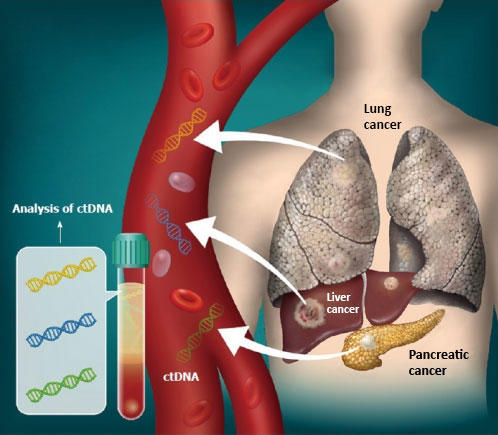Professor Wen-Bo Liu's research group at Wuhan University reported a nickel-catalyzed regioselective hydrogen metallization/5-exo-trig cyclization reaction. Using β-propargylcyclobutanone as a starting material, multi-substituted bicyclo[2.1.1]hexanol can be synthesized in one step, followed by skeletal rearrangement to yield 1,2,4-trisubstituted bicyclo[2.1.1]hexanone. This structure can be used for diverse derivatization reactions. DFT computational studies elucidated the crucial role of carbonyl coordination in regioselectivity control. This research provides a new method for obtaining structurally diverse bicyclo[2.1.1]hexane (BCH) derivatives, with potential applications in drug development. The article was published as an open access research article in CCS Chemistry, the flagship journal of the Chinese Chemical Society.
Background information:
Benzene rings are the most common core structure in drug molecules, but their planar configuration often leads to poor metabolic stability and low water solubility. Bicyclo[2.1.1]hexane (BCH), as a three-dimensional saturated benzene ring bioisostere, not only maintains similar spatial conformations of substituents but also improves the physicochemical properties of drug molecules, and has attracted much attention in recent years. The reported BCH synthesis methods mainly include the [2π+2π] cycloaddition reaction of 1,5-diene compounds and the [2σ+2π] cycloaddition reaction of bicyclo[1.1.0]butane with unsaturated bonds; however, the transition metal-catalyzed direct cyclization strategy of β-alkynylcyclobutanone has not been reported. The main challenges are overcoming the side reactions such as β-carbon elimination ring opening caused by the high ring strain of the bicyclo[2.1.1]alkoxy metal intermediate, the direct reduction of alkynes/carbonyl groups, and how to regulate the regioselectivity of alkyne hydrogen metallization.
The team led by Wen-Bo Liu Wenb at Wuhan University developed a nickel-catalyzed "hydrogen metallization-5-exo-trig cyclization" strategy: using (TMSO)₂MeSiH as the hydrogen source, the in-situ generated nickel-hydrogen species undergo a carbonyl-directed regioselective cis-hydroxylation reaction with the alkyne moiety of β-alkynylcyclobutanone; subsequently, alkenyl nickel undergoes a carbonyl 1,2-addition with cyclobutanone, followed by protonolysis to successfully construct a high-strain BCH skeleton. The product can be further rearranged via acid or base-promoted hemipinalol to obtain 1,2,4-trisubstituted bicyclo[2.1.1]hexanone, achieving the efficient synthesis of a series of [2.1.1] hexane skeleton derivatives.
Highlights of this article:
(1) The first transition metal-catalyzed intramolecular cyclization strategy for constructing a BCH backbone of cyclobutanone substrate;
(2) Bicyclo[2.1.1]hexanone can be constructed through skeletal rearrangement, and it is readily derivatized to synthesize BCH derivatives;
(3) The synthesized BCH compound has a high degree of similarity to the geometric structure of 1,2,4-trisubstituted benzene, and has the feasibility of being a bioisostere of benzene ring.
Summary and Outlook:
In summary, this study achieved the construction of BCH using a nickel-catalyzed intramolecular hydrogen metallization cyclization strategy for cyclobutanone , overcoming the challenge of easily opening strained rings. It provides an efficient method for obtaining multi-substituted bicyclo[2.1.1]hexanol/hexanone from simple β-alkynylcyclobutanone in one step, with advantages such as mild conditions, broad substrate scope, and easy product derivatization. It provides a new tool for the efficient synthesis of bioisosteres of benzene rings and the three-dimensional modification of drug molecules.
The findings were published as a Research Article in CCS Chemistry. Professor Wen-Bo Liu of the College of Chemistry and Molecular Sciences at Wuhan University is the corresponding author, and doctoral students Xiao-Lin Li and Yong-Zhuo Xu, along with master's student Jiang-Lian Deng, are the co-first authors. This work was supported by the National Natural Science Foundation of China and the National Key Research and Development Program of China.
---
About the journal: CCS Chemistry is the Chinese Chemical Society's flagship publication, established to serve as the preeminent international chemistry journal published in China. It is an English language journal that covers all areas of chemistry and the chemical sciences, including groundbreaking concepts, mechanisms, methods, materials, reactions, and applications. All articles are diamond open access, with no fees for authors or readers. More information can be found at https://www.chinesechemsoc.org/journal/ccschem .
About the Chinese Chemical Society: The Chinese Chemical Society (CCS) is an academic organization formed by Chinese chemists of their own accord with the purpose of uniting Chinese chemists at home and abroad to promote the development of chemistry in China. The CCS was founded during a meeting of preeminent chemists in Nanjing on August 4, 1932. It currently has more than 120,000 individual members and 184 organizational members. There are 7 Divisions covering the major areas of chemistry: physical, inorganic, organic, polymer, analytical, applied and chemical education, as well as 31 Commissions, including catalysis, computational chemistry, photochemistry, electrochemistry, organic solid chemistry, environmental chemistry, and many other sub-fields of the chemical sciences. The CCS also has 10 committees, including the Woman's Chemists Committee and Young Chemists Committee. More information can be found at https://www.chinesechemsoc.org/ .






